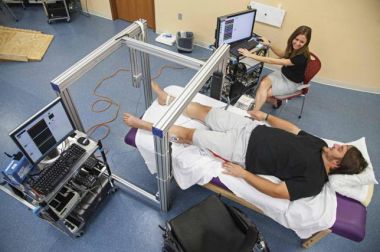Doctors unleash brain power of paralysed man to make him walk again sans gadgets

Mark: 1-12 of the Holy Bible tells us the story of how Jesus Christ forgave and healed a paralysed man. Jesus ordered the paralytic, brought to him carried by four men, to "take up your mat and go home." The paralytic got up, took his mat and walked out of the crowded place where Jesus healed him, much to the amazement of the people who witnessed the miracle.
A similar situation happened recently, this time through the power of science: Doctors were able to tap brain power to make a person who has been paralysed for five years to walk without using aid devices.
The patient, who suffered a spinal cord injury, was remarkably able to take steps along a 3.66-meter-long course using an electroencephalogram (EEG)-based system, according to a story posted on Eurekalert.com.
This system uses electrical signals from the patient's brain, which travel down to electrodes placed around his knees to create movement.
Dr. An Do, one of the lead researchers involved in the study, from University of California, Irvine, USA, explained that the research showed how sheer brain power can help a patient conquer disability.
"Even after years of paralysis the brain can still generate robust brain waves that can be harnessed to enable basic walking. We showed that you can restore intuitive, brain-controlled walking after a complete spinal cord injury," the researcher said.
The doctor also sees the research as having a big impact on how disabilities will be addressed in the future.
"This non-invasive system for leg muscle stimulation is a promising method and is an advance of our current brain-controlled systems that use virtual reality or a robotic exoskeleton," the researcher said.
Preliminary results of this research were published in the open access Journal of NeuroEngineering and Rehabilitation.
The patient was initially trained mentally by controlling an avatar in a virtual reality environment. He also underwent physical training for his leg muscles, and was at first trained to walk suspended above ground.











